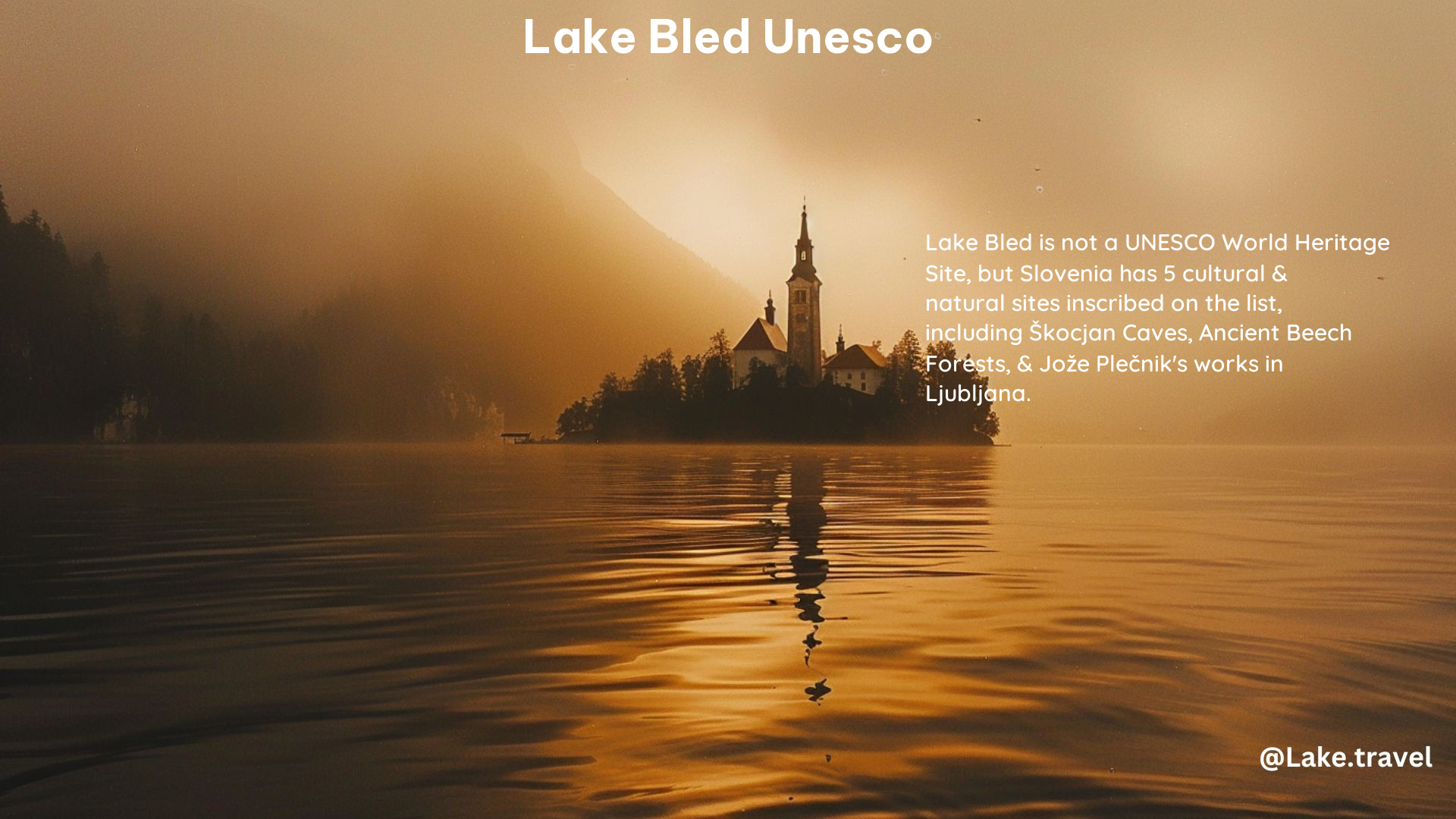Lake Bled, nestled in the heart of the Julian Alps in Slovenia, is a breathtaking natural wonder that captivates visitors from around the world. While it is not officially designated as a UNESCO World Heritage Site, this picturesque lake and its surrounding landscape are undoubtedly a hidden gem worth exploring.
The Unique Features of Lake Bled
Lake Bled is renowned for its crystal-clear, emerald-green waters, which are fed by underground springs and surrounded by the majestic Julian Alps. The lake’s centerpiece is the small, picturesque island, home to the iconic Church of the Assumption, a medieval church dating back to the 15th century. Visitors can reach the island by taking a traditional wooden boat, known as a “pletna,” which adds to the enchanting experience.
Perched atop a steep cliff overlooking the lake is the Bled Castle, a medieval fortress that dates back to the 11th century. The castle offers stunning panoramic views of the lake and the surrounding landscape, making it a popular destination for both history enthusiasts and sightseers.
The Natural Beauty of the Julian Alps

The Julian Alps, which serve as the backdrop to Lake Bled, are a breathtaking mountain range that stretches across the border between Slovenia and Italy. These mountains are renowned for their rugged peaks, pristine alpine meadows, and crystal-clear lakes and streams. The region is a haven for outdoor enthusiasts, offering a wide range of activities such as hiking, climbing, and skiing.
One of the most popular hiking destinations in the Julian Alps is the Triglav National Park, which is home to Slovenia’s highest peak, Mount Triglav. The park is known for its diverse flora and fauna, as well as its stunning glacial lakes and waterfalls.
The Cultural Significance of Lake Bled
While Lake Bled may not be a UNESCO World Heritage Site, the region surrounding the lake is rich in cultural heritage. Slovenia, the country where Lake Bled is located, has five UNESCO World Heritage Sites, two of which are natural and three are cultural.
The cultural sites include the Škocjan Caves, a vast underground cave system that is home to unique geological formations and diverse ecosystems; the Heritage of Mercury in Almadén and Idrija, which showcases the history of mercury mining in the region; and the Prehistoric Pile Dwellings around the Alps, which are remnants of ancient lake-dwelling communities.
In addition to these UNESCO-recognized sites, Lake Bled and the surrounding area are home to a wealth of cultural attractions, including the Bled Castle, the Church of the Assumption, and the traditional pletna boats that ferry visitors to the island.
Outdoor Activities and Attractions
Lake Bled and the Julian Alps offer a wide range of outdoor activities and attractions for visitors to enjoy. Some of the most popular activities include:
-
Boating: Visitors can take a traditional pletna boat to the island in the center of the lake, where they can explore the Church of the Assumption and enjoy the stunning views.
-
Hiking: The Julian Alps offer numerous hiking trails, ranging from easy strolls around the lake to more challenging treks to the top of Mount Triglav.
-
Cycling: The area around Lake Bled is well-suited for cycling, with a network of scenic bike paths and trails.
-
Swimming: During the warmer months, visitors can take a dip in the crystal-clear waters of Lake Bled.
-
Fishing: The lake is stocked with trout and other freshwater fish, making it a popular destination for anglers.
-
Skiing: In the winter, the Julian Alps transform into a winter wonderland, offering excellent skiing and snowboarding opportunities.
Accommodations and Dining
Lake Bled and the surrounding area offer a wide range of accommodations, from cozy guesthouses and charming inns to luxury hotels and resorts. Visitors can also enjoy a variety of dining options, ranging from traditional Slovenian cuisine to international fare.
One of the must-try local specialties is the famous Bled cream cake, a delectable dessert made with layers of vanilla custard and whipped cream, topped with a dusting of powdered sugar.
Conclusion
While Lake Bled may not be a UNESCO World Heritage Site, it is undoubtedly a natural and cultural gem that deserves to be explored. With its stunning natural beauty, rich history, and diverse range of outdoor activities, Lake Bled is a destination that should be on the bucket list of any lakes touring enthusiast.
